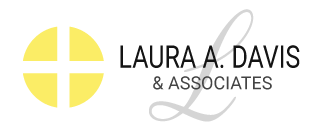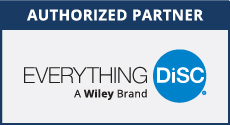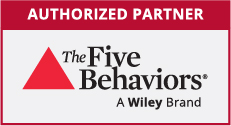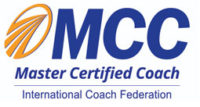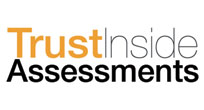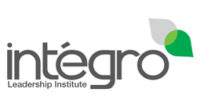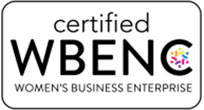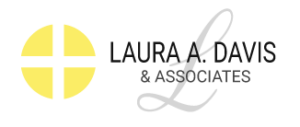People-Whispering Tip:
“When you reframe problems as projects or opportunities, they will cease to bother you and will begin to stimulate you.” ~ Alan Cohen
“How do you eat an elephant? One bite at a time.” ~ Anonymous
“If you wish to drown, don’t torture yourself with shallow water.” ~ Bulgarian Proverb
3 Keys to Getting Things Done
There is a common cry I hear from almost all of my clients these days. That refrain is, there are just not enough hours in the day. I feel their pain and sincerely empathize. Another common complaint I hear is something akin to “I just can’t seem to get myself going on this project.” I feel unmotivated as well as overwhelmed.” Does any of this sound familiar?
Yet when we really observe human behavior, most of us find the time to do the things we really want to do. We even find the time to get the things done we really need to do. When we dig a little deeper, we are not achieving the happiness and fulfillment that can come from the genuine pride of accomplishment because we fail to do three simple things.
Let’s address these three things so you can get into inspired action as well as help guide others to do the same.
1. Shift Your Thinking by Reframing the Challenge
The first challenge is procrastination. Let’s face it, we all tend to put off things we anticipate we are going to find uncomfortable, unpleasant, or just plain hard. So one of the tips to getting started is to shift the way we see things. In most cases, there is some positive aspect of the activity that you do enjoy— even if the only thing you enjoy is finishing it!
For example, say you need to start exercising and you put it off until everything else on your list is done. Instead of dreading getting started, you could imagine how good you will feel once you begin. Likewise, if you can connect to the good feelings you will have at the end of the exercise session, this can keep you on track.
This strategy works well for me on Saturday mornings when I am tempted to stay in bed rather than get up and drive to my favorite yoga studio. When I am tempted to skip my practice, I think about how good it will feel 10 to 15 minutes into the process once I am limbered up. I also tune into how energized and relaxed I feel at the end of the class as I start the rest of my weekend.
Sometimes a reward after major milestones or at the end of a daunting task can be helpful. That said, often just envisioning the sense of accomplishment after the task or project is done is enough to keep you on track.
2. Have Compassion for Yourself and Chunk That Project Down
The field of neuroscience and coaching is absolutely fascinating and helpful for us to explore but I will cut to the chase and make it simple for you. It is the nature of the mind to seek the field of greater pleasure rather than pain. That is why watching TV can seem more appealing than starting the report you need to get done for work. It is human nature so don’t beat yourself up for your personal lack of discipline.
Even the most successful people feel like procrastinating about something some of the time. Fortunately for us humans though, our pre-frontal cortex affords us the capability to choose long-term satisfaction over short-term pleasure even though we may not want to initially. The key is to gain positive momentum so that you move into the flow. We all know the hardest part is getting started.
One tip to get into action is to chunk that project down into manageable size chunks. Rather than cleaning your whole closet for example, throw out two pieces of clothing that you haven’t worn in years. Rather than writing the whole report, do the research on the analysis section and plan to write the interpretation later. You get the idea and know that this works from your own experience.
3. Eliminate Your Tolerations
The concept of tolerations was articulated and developed by the late Thomas Leonard, founder of Coach University where I received my initial coaching training. Thomas Leonard’s point was that when we put up with things, it costs us unnecessary energy which prevents us from attracting what we want and accomplishing what we desire.
Today, there is so much information and stimulation coming at us that our brains are as full of clutter as are our homes. This can result in us being so busy trying to get the little things done that we never get to the important things in life. Another example of a toleration on a physical level might be someone who needs to drive and work out of their car but their car is dirty and messy. As a result, they waste time and energy trying to find what they are looking for when they meet with a client or customer.
A toleration can also be on an interpersonal level such as putting off that conversation you need to have to clear the air with someone. Perhaps it is “firing” an unreasonable client or ending a friendship that has become stale or even toxic to you.
When we eliminate our tolerations, we increase our confidence and self-esteem and free up our energy and attention to be able to focus on what is truly important. I ask my individual clients at all level of the organization to list 5 to 10 things they are currently tolerating as we begin our work together. Sometimes addressing the smallest of tolerations increase their energy and gets the momentum going for them to be able to take on their big and most important goals.
To learn more about how to create healthy teams by applying these principles, call us at 404-327-6330 or email me at Laura@lauraadavis.com.
DiSC® Assessment Application(s):
1) The Five Behaviors of a Cohesive Team Demo Site is Now Available a http://demo.fivebehaviors.com
Best-selling author Patrick Lencioni has joined forces with Wiley (formerly Inscape Publishing) to offer this excellent process for building effective teams.
Teamwork is the lifeblood of an effective organization. Unlocking the code to getting groups of people to work together in high-performing and joyous ways is the key to a profitable and sustainable corporate culture.
The process consists of an individual and team assessment based upon Lencioni’s time-tested, proven model. The accompanying Facilitator Kit walks you through his research-based model to uncover where your team’s strengths and areas for growth and development lie.
To take advantage of this well-designed, time-tested method to unleash your team’s potential, call our office at 404-327-6330 or email Laura@lauraadavis.com.
2) Final Five Behaviors of a Cohesive Team Product Briefings
Wiley VP Julie Straw is finishing her country-wide tour of product briefings about “The Five Behaviors of a Cohesive Team.”
To register for one of these sessions, please call us at 404-327-6330 or email Laura at Laura@lauraadavis.com.
At these breakfast and morning educational sessions (from 8 AM to 10 AM), you will walk away with:
- A high-level overview of The Five Behaviors Model
- Insights from the team assessment that you can apply to your own team and organization
- Real-life examples from the companies who have used The Five Behaviors of a Cohesive Team as their competitive advantage
- Patrick Lencioni’s New York Time best-selling ebook The Five Dysfunctions of a Team
| King of Prussia, PA | September 10, 2014 |
| Harrisburg, PA | September 11, 2014 |
| Fort Lauderdale, FL | October 2, 2014 |
| Orlando, FL | October 3, 2014 |
| Chicago, IL | October 8, 2014 |
| Madison, WI | October 9, 2014 |
| Denver, CO | October 22, 2014 |
| Des Moines, IA | October 23, 2014 |
| St. Louis, MO | October 29, 2014 |
| Overland Park, KS | October 30, 2014 |
| Cincinnati, OH | November 5, 2014 |
| Tysons Corner, VA | November 6, 2014 |
| San Francisco, CA | December 3, 2014 |
| Seattle, WA | December 4, 2014 |
| Toronto, CA | December 9, 2014 |
Don’t miss these final special events!
3) Everything DiSC Online Certification – Workplace Specialization – NO TRAVEL REQUIRED – the course is virtual
Are you looking to:
- Gain expertise, confidence, and credentials to facilitate Everything DiSC sessions in your organization?
- Understand and appreciate the research behind Everything DiSC?
- Learn from the flexibility and convenience of your office or home?
CALL (404) 327-6330 to REGISTER – You must register through me your Authorized Partner.
DATES: The next class is being held from September 8 through Oct. 3, 2014. Live, collaborative sessions are scheduled each Thursday during this time period.
Click here for more information.
4) The 8 Dimensions of Leadership: DiSC Strategies for Becoming a Better Leader by Jeffrey Sugarman, Mark Scullard, and Emma Wilhelm
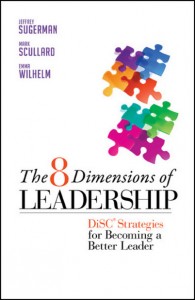 In recent ezines, we covered the Work of Leaders book and the key drivers and behaviors of the Vision-Alignment-Execution model . The Work of Leaders synthesizes the 3 fundamental responsibilities all leaders have. Leaders must craft a vision, build alignment, and champion execution.
In recent ezines, we covered the Work of Leaders book and the key drivers and behaviors of the Vision-Alignment-Execution model . The Work of Leaders synthesizes the 3 fundamental responsibilities all leaders have. Leaders must craft a vision, build alignment, and champion execution.
While all leaders need to be proficient in all 3 areas, we all approach leadership from a unique starting point – a combination of our own psychological make-up, intelligence, training, and experience. When anyone strives to grow as a leader, they need to stretch their energy in new directions. For example, a person may be promoted into a leadership role because of their outgoing nature and positive attitude. While this visionary style may prove inspiring, they might also need to develop their analytical side in order to be more successful at running a business.
Even more common is the person who gets promoted into a leadership role because they were the best and brightest salesperson, engineer, scientist, etc. That person was rewarded for doing something well and yet now they are required to exhibit a completely different skill set. Inspiring and leading others to perform well is quite a different challenge than performing a particular role well yourself.
The 8 Dimensions of Leadership Model described in the book is based on the DiSC model, a systematic way to understand the forces beneath the surface that drives our individual behavior.
In upcoming issues of this ezine, we will cover some of the lessons we can learn from each of the 8 leadership styles. The 8 key leadership dimensions are: Pioneering, Energizing, Affirming, Inclusive, Humble, Deliberate, Resolute, and Commanding. We all have a “default setting” for one of the styles which determines how we set goals, make decisions, influence and judge others, and much more.
Through greater self-awareness and understanding of others we can capitalize on our strengths and avoid becoming captive to our own blind spots based upon our beliefs, attitudes, and priorities. Understanding this model will help you to minimize how frequently you jump to conclusions, make poor judgment calls, and project our own motivations onto others.
The ultimate goal is to broaden your repertoire beyond just your comfort zone/default setting so that you can make the best choice of leadership style and behavior based upon the needs of any given situation.
There is a four step model for using this information to improve your leadership effectiveness as follows:
- Discover Your Primary Leadership Dimension.
- Learn about the Psychological Drivers, Motivations, and “Blind Spots” Typical of Leaders with Your Style.
- Reflect on What Really Matters Most in your Leadership Development Right Now.
- Learn Leadership Lessons in the Areas in Which You’d Like to Grow and Expand.
Stay tuned for future webinars and trainings which will delve into The 8 Dimensions of Leadership Model so you will know how you can begin to apply it for your own as well as for your team’s leadership development needs.
For more on how to increase your organization’s effectiveness using the appropriate Everything DiSC profile and/or training materials for your unique needs, please call us at 404-327-6330 or email me at Laura@lauraadavis.com.
Transformational Coaching Tip:
We all tend to procrastinate on projects and tasks that are unpleasant, complex, and uninteresting regardless of their priority. Here is a quick review of how to work with procrastination in a healthy way.
Tips for Getting Into Inspired Action
- Reframe how you are viewing that task or project. Get in touch with the positive feelings of accomplishment once it is completed.
- Visualize it as completed and feel how good you feel as a result now.
- Break the project/task into smaller chucks.
- Reward yourself along the way as aspects of the project are completed.
- Break your normal routine and “get away” to get it done.
- Ask for help if you need it. You don’t have to do it all yourself! Learn to delegate.
For assistance in applying any of these best practices into your workplace for more powerful, effective results, feel free to call us at 404-327-6330 or email Laura at Laura@lauraadavis.com.
